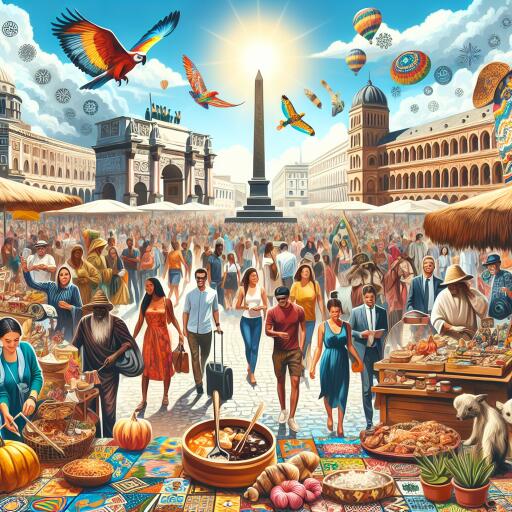Tourism Market ‘Sizzling’ with Cultural Venues Favored
During the recent eight-day Chinese Lunar New Year holiday, the enthusiasm for travel among Chinese tourists reached new heights, setting the stage for a bustling season characterized by a notable shift towards cultural exploration and a significant upsurge in the inbound tourism sector. Travel operators across the country reported a striking trend: a growing preference for cultural venues and an impressive rebound in inbound tourism.
China’s tourism landscape was vibrant over the winter break, witnessing an unprecedented rush to its myriad attractions. Notable cultural and historical sites like the Palace Museum, Terra Cotta Warriors, and the Hunan Museum saw their reservation slots quickly filled, reflecting the public’s deepening interest in the nation’s rich heritage. As the holiday neared its conclusion, travelers scrambled for return tickets, with economy-class fares from the popular beach destination of Sanya to Shanghai selling out, leaving only the pricier options available.
According to data from the leading travel review website Mafengwo, long-distance journeys constituted over 65 percent of all travel bookings, with more than 70 percent of tourists opting for vacations extending beyond four days. In an interesting revelation, about 37.7 percent of travelers embarked on trips lasting more than six days, underlining the preference for longer, more immersive travel experiences.
Destinations offering a taste of guofeng (China-chic), like Xi’an, won over the hearts of holidaymakers. Xi’an’s popularity soared by 400 percent immediately following its feature as a sub-venue in the widely watched CCTV Spring Festival Gala on Chinese New Year’s Eve, illustrating the significant influence of media on travel choices.
The holiday period saw a marked shift in tourist preferences, with museums, grottoes, and temples emerging as favored destinations alongside the more traditional lantern and temple fairs. The Palace Museum, Sanxingdui Museum, National Museum of China, and Nanjing Museum ranked among the top ten cultural attractions. This year, travelers sought more than just a brief visit, with many expressing a desire for professional guided tours to achieve a deeper understanding of the exhibits and sites visited.
Online travel operator Tuniu reported a surge in interest in traditional Chinese cultural activities, noting that several cultural venues, including the Palace Museum and Suzhou Museum, were fully booked throughout the holiday period. Attractions featuring the Chinese character 龙 (loong), such as Yalong Bay and Longmen Grottoes, also witnessed high visitor numbers.
Interestingly, some traditional favorite outbound destinations in Southeast Asia benefited from preferential visa policies, attracting a significant number of Chinese tourists. Thailand, Singapore, and Malaysia, all offering visa-free entry to Chinese visitors, topped the list of preferred outbound destinations. New Zealand and Australia also saw an influx of Chinese tourists, thanks to their off-season status.
Shanghai-based Trip.com revealed an across-the-board increase in domestic, inbound, and outbound travel orders compared to the same period in 2019. Notably, interprovincial travel, encompassing visits to popular destinations like Harbin and Sanya, doubled from the previous year, highlighting a resurgent interest in diverse travel experiences within China.
The soar in travel activity led to a 20 percent hike in domestic airfare prices from the previous year, with the average cost of a single trip reaching 1,200 yuan. Entertainment and ticketing orders also saw a significant price increase, doubling the figures recorded during last year’s Spring Festival holiday.
Inbound tourism, in particular, witnessed a 48 percent increase from 2019, spurred by several favorable policies aimed at boosting the sector. Countries like Japan, the United States, and South Korea were identified as major sources of inbound travelers, marking a promising start to the year for China’s tourism industry.
The Chinese Lunar New Year holiday has not only highlighted the robust recovery and thriving demand within the tourism sector but also underscored a growing appreciation for cultural exploration among travelers. As the market continues to adapt and evolve, the shift towards cultural tourism is poised to enrich the travel experiences of visitors, fostering a deeper understanding and appreciation of the world’s diverse cultures and heritage.
